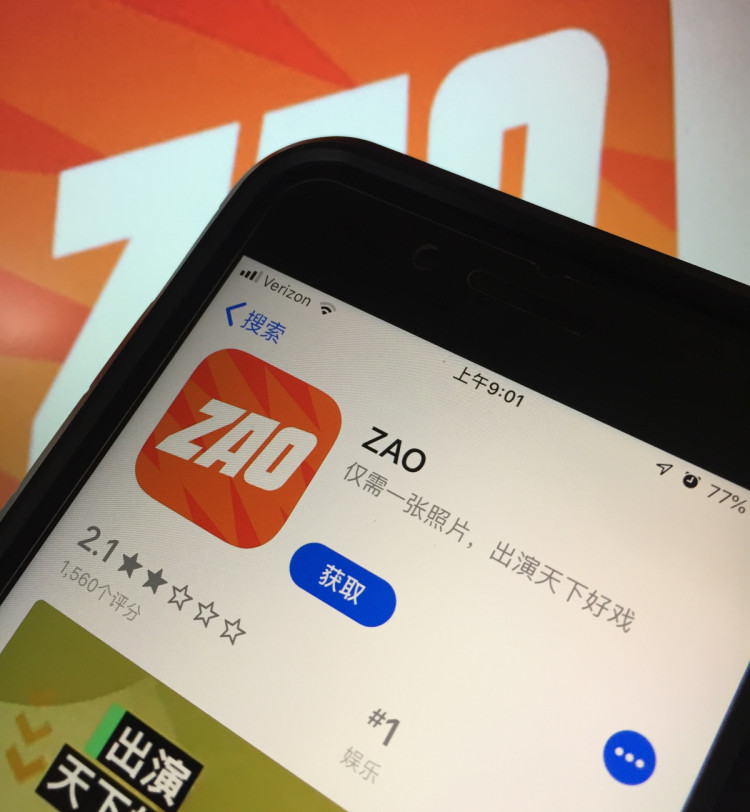Popular Chinese social media platform WeChat has restricted access to the hugely popular face-swapping app called "ZAO" out of concerns the app might be used for criminal activity.
Released only on Aug. 31, ZAO is a "deepfake" app that allows users to swap their faces with movie stars, famous people, sports stars and anyone else in a video using a single selfie. It is only available in China.
Despite its release only four days ago, ZAO now the most downloaded app on China's iOS app store. It quickly went viral and was so heavily downloaded it almost crashed the servers of Momo Inc, the company that developed it.
Chinese users share their ZAO videos on Chinese social media platforms such as WeChat, which was also deluged with complaints about ZAO and its privacy-violating terms of service. WeChat has now restricted access to ZAO.
WeChat said its users can still upload videos they created with ZAO. If users try to download the app or send an invitation to download ZAO to another WeChat user, a message will be displayed saying, "This web page has been reported multiple times and contains security risks. To maintain a safe online environment, access to this page has been blocked."
In its Weibo account, ZAO said "we completely understand everybody's concerns about the privacy issue. We are aware of the issue and we are thinking about how to fix the problems, we need a little time."
Its terms and conditions now say user-generated content will only be used to improve the app. It also claims all deleted content will be removed from its servers.
To use ZAO, a user signs-up for the app with his phone number. He uploads a selfie-and can then superimpose his face on the face of his chosen movie star or famous person featured in a video. The user can then share the deepfake video with his friends on social media.
Most of the celebs in the app's line-up are Chinese (understandably) but there are also videos of a few popular Western stars such as Leonardo DiCaprio.
ZAO is a type of "deep fake." A deepfake is an AI-based human synthesis technology that combines and superimposes existing images and videos onto source images or videos. They use a machine-learning technique known as deep learning that automatically superimposes a new face on an existing video.







